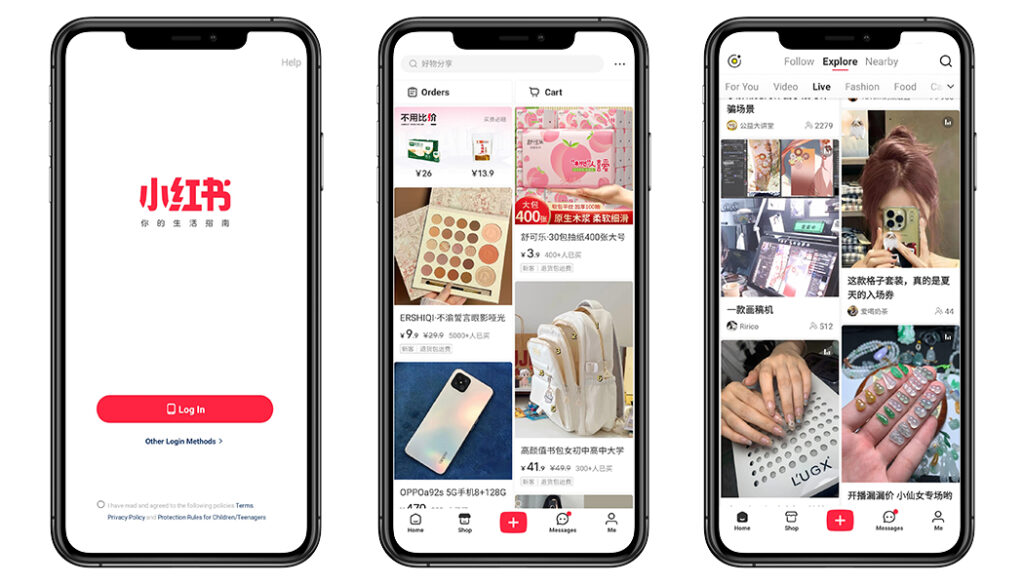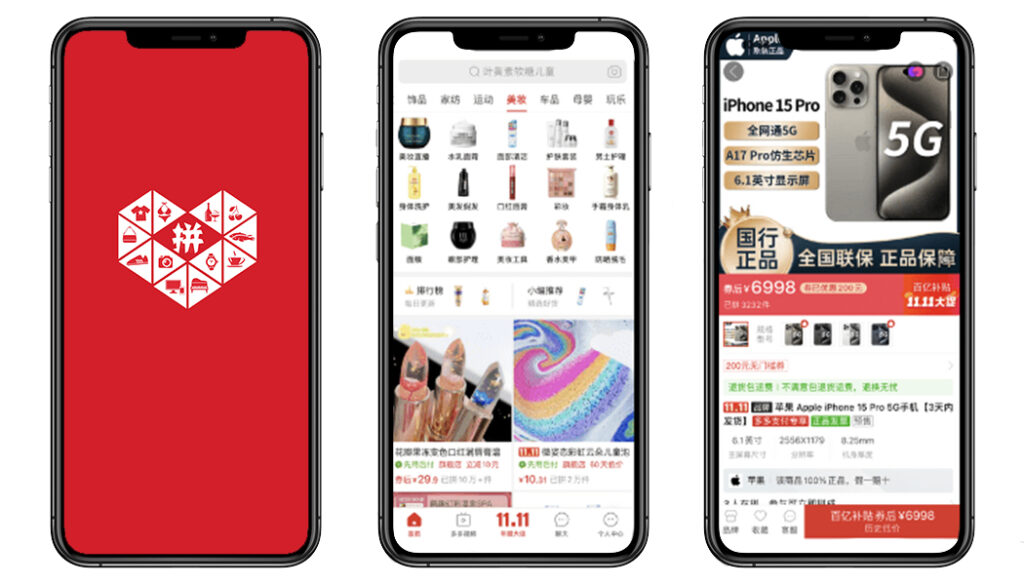Social commerce has revolutionized the way people shop online, particularly in China. This hybrid of social interaction and online shopping has created a vibrant ecosystem where consumers engage with brands, influencers, and each other in unprecedented ways. China’s social commerce platforms, such as Xiaohongshu, WeChat, Douyin, Taobao, Pinduoduo, and Weibo, have been at the forefront of this transformation. These platforms leverage user-generated content, Key Opinion Leaders (KOLs), and innovative features like live streaming to create an engaging and dynamic shopping experience.
The Rise of Social Commerce in China
Social commerce in China merges the convenience of e-commerce with the engagement of social media, offering a dynamic shopping experience that appeals to the country’s vast online population. With over 1 billion internet users, China leads the world in integrating social interactions with online shopping. This unique market leverages the power of recommendations from friends, family, and influencers, driving consumer trust and engagement.
Key Features of Chinese Social Commerce
1. User-Generated Content
User-generated content (UGC) is at the heart of social commerce in China. Consumers actively share their experiences, opinions, and visuals such as reviews, photos, and videos, which influence the purchasing decisions of others. This communal sharing fosters a sense of trust and authenticity, making UGC a powerful tool in the social commerce landscape.
2. Role of Key Opinion Leaders (KOLs)
Key Opinion Leaders (KOLs) are influential figures who play a critical role in Chinese social commerce. KOLs leverage their online presence to endorse products, engage with their followers, and drive sales through strategies like live streaming and product reviews. Their active involvement not only shapes consumer preferences but also enhances brand recognition, making them indispensable in the social commerce ecosystem.
3. The Power of Live Streaming
Live streaming has become a significant aspect of social commerce in China, allowing brands and influencers to showcase products in real-time to large audiences. Consumers can interact with KOLs during live streams, ask questions, and provide feedback, creating an interactive and engaging shopping experience. The effectiveness of live streaming is evident, with 763 million live streaming users as of June 2023, demonstrating its impact on driving sales and consumer engagement.
Evolution of Marketing Strategies in Chinese Social Commerce
To stay ahead in the competitive social commerce landscape, brands must continually adapt their marketing strategies and embrace technological innovations. A prime example is Alibaba’s launch of Tmall mobile app version 13.1.0 in 2022, which introduced a cutting-edge 3D shopping feature. This innovation allows users to explore products in an immersive virtual environment, enhancing the shopping experience and setting new standards for online retail.
Influence of Social Commerce in China
Social commerce in China is steadily gaining influence, merging online shopping with social interactions to create a dynamic and engaging environment. Traditional e-commerce channels still dominate, but social commerce is growing rapidly, driven by user-generated content, KOLs, and live streaming. Platforms like Xiaohongshu, WeChat, and Douyin (Chinese TikTok) are at the forefront of this revolution, offering businesses unique opportunities to connect with consumers and enhance their shopping experiences.
Major Social Commerce Platforms in China
China’s social commerce landscape is characterized by a variety of platforms, each with unique features that cater to different aspects of consumer interaction and purchasing behavior. Below is an in-depth exploration of some of the major social commerce platforms in China, highlighting their key functionalities and advantages.
1. Xiaohongshu (Little Red Book)
Xiaohongshu, or Little Red Book, is one of the most influential social commerce platforms in China. Initially recognized for its reliable and authentic reviews on products, particularly in the cosmetics, fashion, and beauty sectors, Xiaohongshu has since diversified its offerings to include a broader range of product categories.
Key Features of Xiaohongshu:
- High Engagement Metrics: The platform boasts high engagement rates, with users spending an average of 40 minutes per day on the app. This level of interaction is driven by the quality and authenticity of the content, as well as the platform’s user-friendly interface.
- Live Streaming Integration: Xiaohongshu integrates live streaming features, allowing influencers and brands to showcase products in real-time, enhancing user engagement and driving sales.
- Young User Base: With 90% of its users under 32 years old, Xiaohongshu appeals to a younger demographic, particularly those born in the 1990s, who are often more tech-savvy and open to online shopping.
- Seamless Integration with WeChat and Alipay: Jointly invested in by Tencent and Alibaba, Xiaohongshu benefits from seamless integration with major digital payment systems, enhancing the overall user experience and facilitating easy transactions.

WeChat is widely recognized as China’s all-in-one super-app. Originally launched as a messaging platform, it has evolved into a comprehensive ecosystem encompassing social media, e-commerce, mobile payments, and more. This evolution has cemented WeChat’s position as a pivotal social commerce platform.
Key Features of WeChat:
- WeChat Channels: This feature allows users to share and recommend products within their social networks, leveraging word-of-mouth marketing. Brands can also conduct live demos and unveil new products directly to their target audience.
- Mini-Programs: WeChat Mini-Programs can be embedded within Channels and official accounts, providing a seamless consumer journey from content discovery to purchase. These mini-apps enhance the shopping experience by allowing users to complete transactions without leaving the WeChat environment.
- WeChat Pay: Integrated digital payment capabilities through WeChat Pay facilitate easy and secure transactions, enhancing user convenience and trust.
- Extensive Consumer Reach: WeChat’s vast user base and comprehensive features make it a vital tool for businesses looking to tap into the Chinese market.

3. Taobao / Tmall Platform (GuangGuang)
Taobao and Tmall, part of Alibaba Group, have been key players in China’s e-commerce scene. The GuangGuang platform integrates these marketplaces, leveraging the power of social commerce to enhance consumer engagement and sales.
Key Features of GuangGuang:
- Market Share and Influence: Taobao and Tmall hold a significant share of the e-commerce market in China, offering a vast consumer base for social commerce activities.
- Livestreaming KOLs: The platform has seen the rise of influential KOLs like Li Jiaqi, also known as the “lipstick king,” who have redefined the online shopping experience through engaging live streams and product endorsements.
- Retail-Specific Platform: Unlike general social media platforms, Taobao and Tmall are designed specifically for shopping, with algorithms that prioritize buying intent and optimize the user experience for commerce.
- Special Sales Events: The platform hosts a variety of sales events throughout the year, beyond the famous Singles’ Day (11/11), offering customers exclusive deals and driving significant traffic and sales.

4. Pinduoduo
Pinduoduo is a unique social commerce platform that emphasizes group buying, allowing users to purchase products at discounted prices by forming teams with friends and acquaintances. This model has proven highly effective in creating a sense of community and exclusivity.
Key Features of Pinduoduo:
- Group Buying: The platform’s core feature is its group buying model, which encourages users to team up to access special discounts, leveraging social proof and collective purchasing power.
- Gamified Features: Pinduoduo incorporates gamified elements, such as time-limited deals and daily check-in bonuses, to keep users engaged and incentivize frequent interactions.
- Focus on International Brands: The platform has seen a growing popularity of international brands, appealing to consumers looking for diverse and high-quality products.
- Mini-Games: Pinduoduo retains consumer engagement through in-app mini-games, enhancing the overall user experience and encouraging repeated use.

5. Weibo
Weibo, often likened to Twitter, has successfully transitioned into a powerful social commerce platform with the introduction of Weibo Xiaodian. This feature enables brands to manage inventory, process orders, and establish digital storefronts within the platform.
Key Features of Weibo:
- Robust Presence: Weibo’s longevity and adaptability have cemented its position as a major social media platform in China, appealing to a wide range of demographics.
- KOL Marketing: The platform is ideal for finding and collaborating with KOLs, who can significantly boost brand visibility and sales through their influence.
- Seamless Communication: Weibo facilitates direct communication between brands and customers, enhancing engagement and customer service.
- E-Commerce Management: Weibo Xiaodian allows brands to control their e-commerce operations within the platform, providing a seamless and integrated shopping experience for users.

Why China Leads the World in Social Commerce
China’s dominance in social commerce can be attributed to its unique digital infrastructure and consumption culture. Companies like Tencent and Alibaba have created comprehensive digital ecosystems that dominate e-commerce, social media, and digital payments. This integration allows for a seamless consumer journey, where users can browse social feeds, purchase products, and complete transactions effortlessly.
Cultural nuances also play a crucial role. Chinese consumers are accustomed to interactive and engaging digital experiences, making live streaming and mobile video apps popular for both entertainment and shopping. This cultural foundation has provided a solid base for social commerce to thrive, setting China apart from global counterparts.
Social commerce platforms in China have revolutionized the way consumers shop and interact online. By leveraging user-generated content, the influence of KOLs, and the power of live streaming, these platforms create a dynamic and engaging shopping experience. As technology continues to advance and consumer expectations evolve, businesses must adapt their strategies to stay competitive in this rapidly growing market. With platforms like Xiaohongshu, WeChat, Taobao, Pinduoduo, and Weibo leading the charge, the future of social commerce in China looks promising and full of opportunities for brands to connect with their audience in meaningful ways.

